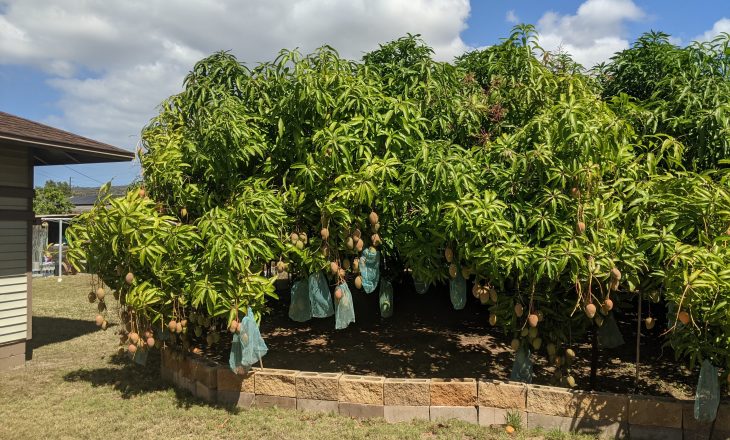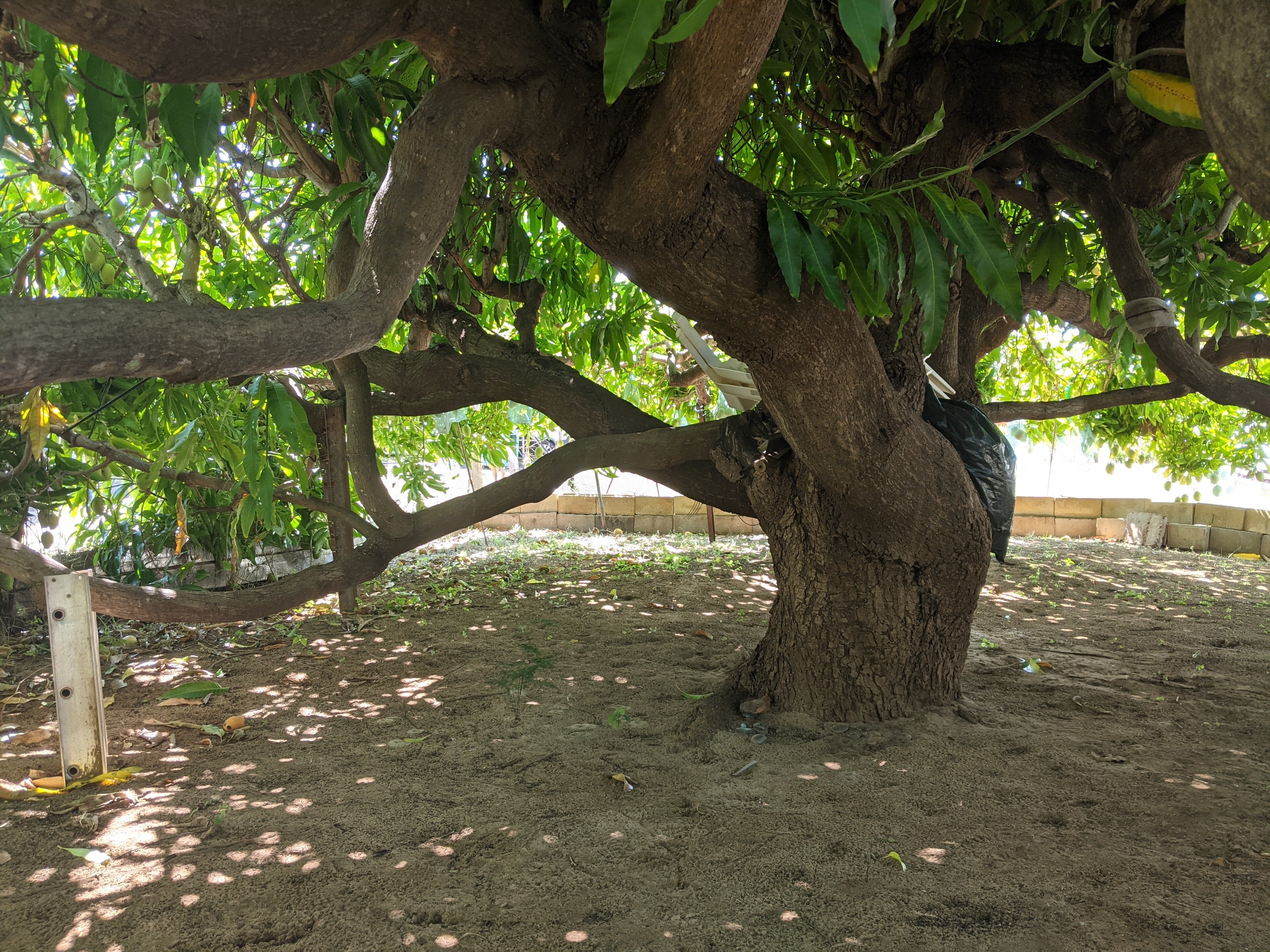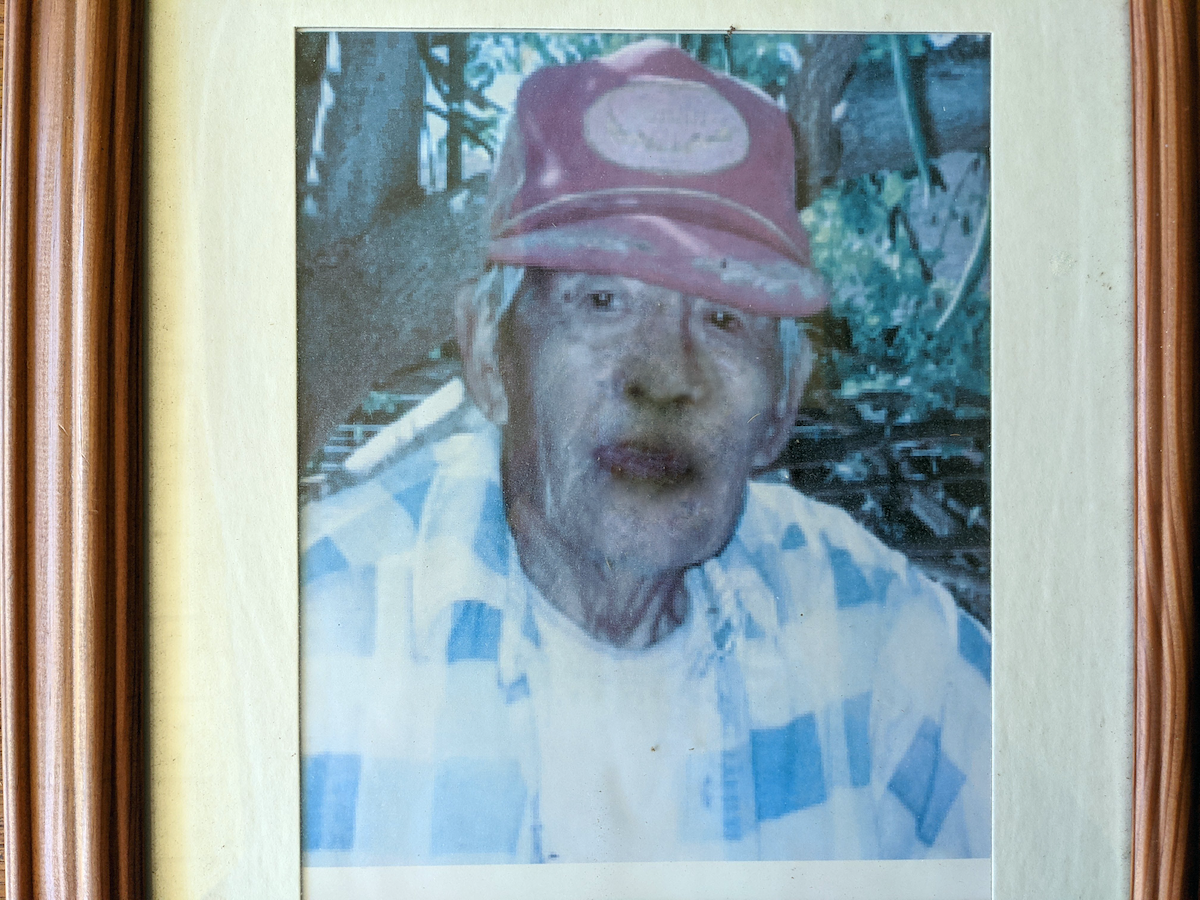The Story of the Short Mango Tree

In the plantation camps, mango was a planted for its sweet and refreshing fruit. It’s no secret that the best mango on Kauaʻi comes from the westside, where it’s hot and dry. There are many varieties of mango, such as the Hayden, Common, and Raposa, but the most popular species back then was the small, sweet, and plentiful Number 9.

My great grandfather, Emilio Yanos, planted this mango tree (pictured) in the 1950s. He was born in Ilocos Norte, Phillipines, and worked at a truck driver for Kekaha Sugar. He was known in my family as Apo Man and lived past 100 years old! Apo, in Ilocano, is a term used out of respect for elders. He wasn’t very tall in stature, but he was resourceful and engineered to suit his lifestyle. He built a storage shed and cookhouse that is less than six feet tall. His most innovative accomplishment was the shortened Number 9 mango trees in his backyard.
Mango trees can reach heights of 100 feet if given a chance. Knowing this, Apo Man hung and tied beer bottles filled with water once the top of the tree was out of reach for his wire basket picker. The tree slowly learned to grow wide instead of tall. Nowadays, I am using this same approach to train bougainvillea shrubs to grow wide, instead of high! He custom made braces out of old ladders and used leverage to support the added weight of the branche. He even added plyboard and other weights directly in the center of the tree to further encourage wide growth.

Apo Man’s trees are unique. Mango trees usually fruit in May and hit peak season during the summer months. These trees are the only mango trees I know that start to flower in the winter and produce fruit in mid-January. Picking the fruit is a fun time! For most people, mango is picked overhead. For this tree, most fruit hang from a foot off the ground to about waist-high, making it easier and safer to harvest.
When my Apo Man was alive, he had soursop, moringa, and lychee trees around his yard. When the mango tree was producing lots of fruit in the summer, he would let the kids in the neighborhood pick the fruit for their families. Mango, and any other fruit or flower in his yard, was never sold. Apo man believed the more you give, the more you will always have. Once you start selling mango, that’s when the tree is going to stop giving fruit. This is the way we were all taught, and his teachings will carry on with what he instilled in us all those years ago.

Submitted by Beau Acoba, Great Grandson of Emilio Yanos
